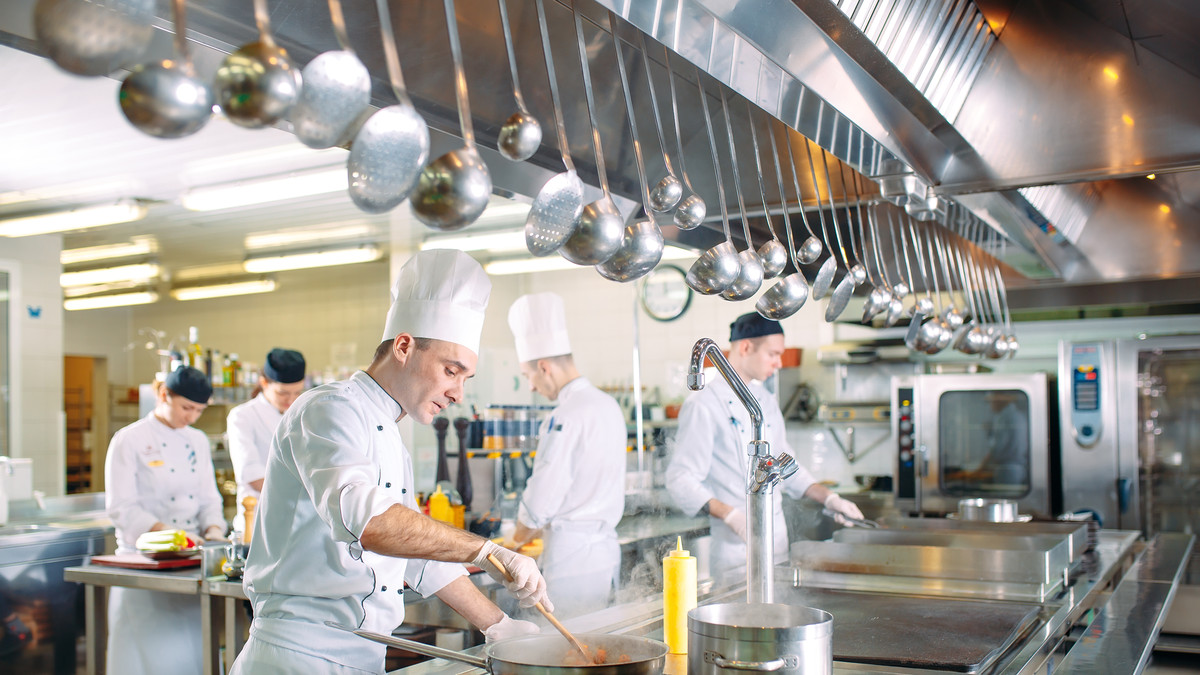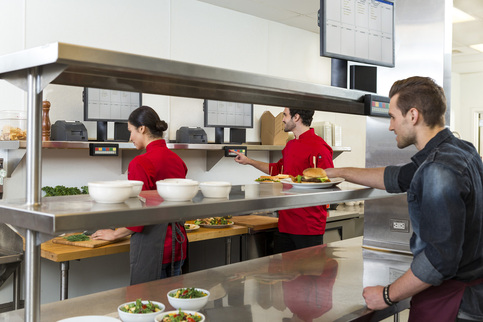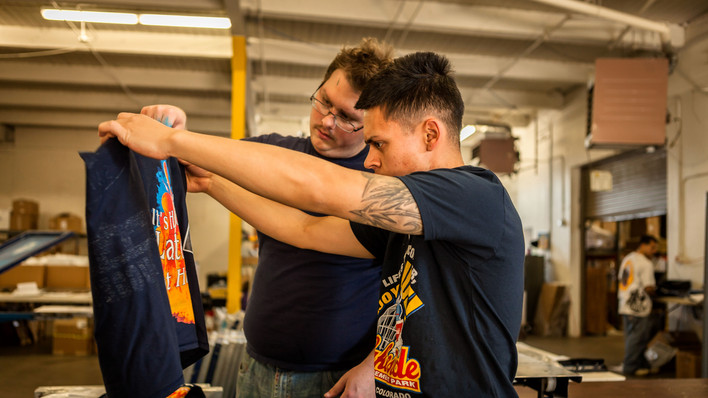Restaurants lost $270 billion last year from coronavirus shutdowns, and many of those that survived the crisis did so in a sink-or-swim frenzy.
Now, as the economy begins to surge, surviving restaurants are getting ready to ride a rising tide of customer demand.
The economy grew at a 6.4 annual pace during the first quarter and sales at restaurants and bars shot up 13.4% in March compared with February, according to the Commerce Department. Consumer confidence rose in April to the highest level since February 2020, stoked by $1,400 federal stimulus checks and pent-up demand from months of stuck-at-home frugality.
Restaurant CFOs are preparing for a surge in warm-weather customers as vaccinations spread and businesses reopen. They are bolstering inventory, improving scenario planning, lining up back-up vendors, exploring consolidation and ensuring access to capital in the event of another setback such as a new wave of infections.
The CFOs are also testing the durability of pandemic-induced changes to their business models, including restaurant lay-out, use of new automation and greater reliance on take-out and delivery.
Their preparations offer pointers to CFOs in less-stressed industries seeking to make the most of the economic boom, according to John Mootz, a culinary consultant and third-generation restaurant owner.
“The restaurant industry has demonstrated the capability to adjust and pivot with circumstances well beyond the control of any business operator,” Mootz said. “I hope that people in other industries find inspiration from what the restaurateur has been able to do.”
Jim Tyson/CFO Dive, data from U.S. Census Bureau, National Restaurant Association
Restaurants have suffered from the pandemic more than most industries. Last year 110,000 U.S. restaurants closed either for the long term or permanently, and nearly 2 million employees lost their jobs, according to the National Restaurant Association (NRA).
Lockdowns hit “casual dining” especially hard. Unable to quickly shift to takeout or delivery, Sizzler and Ruby Tuesday filed for bankruptcy last year.
New customer preferences — and fears — have compelled restaurants to overhaul their business models.
Sixty-eight percent of adults say they are more likely to buy takeout from a restaurant than before the pandemic, while 70% of customers say they’re open to eating a restaurant meal outdoors in a temperature-controlled setting, the NRA said.
Permanent or passing?
As the pandemic lifts, restaurant CFOs will need to determine whether such attitudes will fade or take root, industry experts said. They face other big challenges as well.
Many restaurants that borrowed billions of dollars from the Small Business Administration may need to repay their Payroll Protection Program loans if they fail to meet the terms for loan forgiveness. Rising borrowing costs may slow their efforts to curb debt and improve their balance sheets.
Restaurants are struggling to rehire and recruit staff across their payroll, from servers to cooks to managers.
Workers have stayed away because of virus fears and $300 in federal supplemental weekly unemployment benefits, industry experts said. In response, restaurants ranging from fast food to fine dining are offering enticements such as signing bonuses or higher compensation.
Restaurants also need to affirm to customers that dining out is both safe and more satisfying than takeout or delivery, according to industry experts. Those that lure back diners will need to find the sweet spot between human contact and cost-cutting automation such as QR code menus.
Mother of invention
Some restaurants overcame considerable pandemic challenges and found opportunities through innovation.
Along with electronic menus, restaurants installed other tabletop technology that combines orders for beverages and food, and enables customers to close out their checks without involving a server.
Many restaurants beefed up their loyalty programs, while others invested in technology to streamline drive-thru ordering. Fast food restaurants expanded the use of self-service order kiosks.
At some venues, cashiers take orders outside using electronic tablets, and servers bring food to expanded outdoor seating.
Sixty-two percent of fine dining restaurants, 56% of casual dining and 37% of fast casual eateries have spent more on expanding outdoor seating since 2020, according to the NRA.
“Ghost” or virtual kitchens will also grow in popularity, backed by private equity and other sources of capital, industry experts said. Kitchens that succeed will maintain meal quality while benefiting from the stronger preference for online ordering, delivery and in-home dining.
Consolidation by franchisee operators and the holding companies for large chains has also brightened the outlook for many restaurants and will likely pick up in coming months, the experts said.
Flynn Restaurant Group in March bought NPC International, the largest franchisee for Pizza Hut and Wendy’s. NPC filed for bankruptcy in July. Inspire Brands, the owner and franchisor for several chains including Jimmy Johns and Sonic Drive-In, completed its acquisition of Dunkin’ in December.
Epson QSR Solutions can help enhance customer experiences with a flexible and
reliable suite of products for all aspects of workflow, from ordering through point-of-sale.
Adapt or die
Dartcor bounced back during the pandemic, underscoring the payoffs from agility and innovation. The privately owned company for years provided on-site dining services for corporate clients in the New York City region, an especially competitive market that was blindsided early by COVID-19.
When clients shuttered offices in March 2020, Dartcor closed cafes providing buffet style meals and laid off 70% of its employees.
For clients allowing staff limited office access, Dartcor launched an app that enables employees to order meals for delivery to “outposts” near their desks. It consolidated orders from several office buildings in off-premise “commissaries,” which for years have provided meals for a catering sideline, according to Jason Leeds, vice president for business development.
“We had ghost kitchens running before anyone knew what a ghost kitchen was,” he said. “That’s been a huge asset.”
By taking orders via its app and centralizing meal preparation, Dartcor reduced food waste, increased efficiency and cut costs, gaining an advantage over its larger competitors, Leeds said.
“We saw a massive opportunity to go on the offensive and be more nimble,” he said, noting that Dartcor added a record number of client accounts during the past year.
Pandemic proof
Checkers & Rally’s also contained coronavirus damage and, in some ways, emerged stronger and more nimble.
Beginning in mid-March 2020, same-store sales fell for about four weeks before rebounding 7.8% for the year, according to CFO Bob Baker.
Checkers & Rally’s cut capital spending, secured rent adjustments with landlords, improved terms with vendors, launched a loyalty app linked to its e-commerce platform and promoted third-party delivery, Baker said. E-commerce now handles 12% of sales compared with 6% before the pandemic.
The chain also shifted its menu and promotion strategy to meet rising dinnertime demand for combo meals featuring the Big Buford hamburger and Mother Cruncher chicken sandwich.
Last summer, when beef suppliers hit by the coronavirus slowed production, Checkers & Rally’s bolstered its reserve supply of primary products, Baker said in an interview. It now holds a 90-day inventory of beef.
The chain’s menu eased pandemic stress, Baker said. “Folks were just looking for a meal option of comfort food — burgers and fries — and we’re right down the middle for that.”
Also, its drive-thru-only layout, without a dining room, is tailored to a shutdown, giving it an edge over fast-food rivals.
“If you’re going to enter a pandemic and say, ‘Boy, I need a restaurant concept that might be considered pandemic proof,’ it would be Checkers & Rally’s,” Baker said.
The chain has increased liquidity on its balance sheet during the pandemic and is ready for stronger demand, Baker said, adding that he’s satisfied with the company’s capital structure and has no plans to increase debt.
Despite COVID-19, Checkers & Rally’s added 40 new franchises last year and 10 so far in 2021 for a total of 850.
Referring to future growth, Baker said, “I could build 30% more restaurants in the markets where we operate today, so we’ll do it through same-store sales and unit expansion.”
Meanwhile, some rivals are mimicking Checkers & Rally’s by shrinking or eliminating dining rooms and shifting more to an off-premise model. “It’s kind of fun to watch,” Baker said.
Regardless of their companies’ stress levels, restaurant CFOs today should keep more cash on hand, ensure a solid line of credit and “always have a short list of ways to generate liquidity in a short period of time,” Baker said.
They should also sharpen scenario planning and maintain a firm grasp of downside risks, Leeds said.
Before the pandemic, during a record expansion lasting more than a decade, restaurants and other businesses narrowly focused on “continuing to grow, continuing to deploy capital and not really thinking about a downturn,” Leeds said.
“It’s not always going to be roses and growth,” he said. “It could all collapse at any moment.”
This article was written by Jim Tyson from Restaurant Dive and was legally licensed through the Industry Dive publisher network. Please direct all licensing questions to legal@industrydive.com.
![]()





